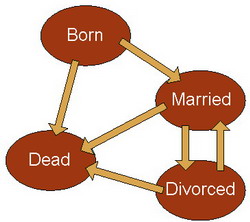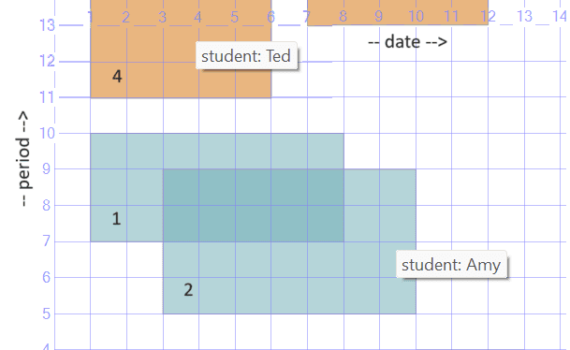
State Transition Constraints
About two decades ago, I introduced the concept of transition constraints to show Data Validation in a […]

About two decades ago, I introduced the concept of transition constraints to show Data Validation in a […]
You probably noticed that when you get a bill or bank statement, it uses the current modern […]
“On a scale from 1 to 10, what color is your favorite letter of the alphabet?” –Slogan […]
One of the least known, least used features of SQL is the CREATE DOMAIN statement. It does […]
if you’re going to work with databases, you probably ought to know something about data. In particular, […]
There is a feature of SQL I have not seen used much and probably with good reason. […]
A view is a virtual table, created when it’s invoked by the < view name>. The goal […]
Like ancient Gaul, SQL is divided into three sub- languages. The DDL (Data Declaration Language) declares the […]
By now, pretty much everyone has heard the stories about the first computers. They were huge, cost […]
Companies today require database systems that are reliable and capable of efficiently handling large volumes of data […]
I would hope by now everybody has figured out when you see a price like $39.99 that […]

Companies of all sizes and across industries are struggling to cope with an explosion of data never […]
If you’ve ever had a traditional logic course, you’ll have run into “The Law of Identity” as […]
Many years ago, my wife and I wrote an article for Datamation, a major trade publication at […]
In this article, I will cover a bit about the LIKE operator, including how it works, and […]
Data generation is the science and art of providing data for database development work that is as […]
One of the many ways a relational table differs from the file structures used by pre-relational storage […]
Let’s start by defining a subset and why you would require a data subset? When dealing with […]
In this article, I will discuss the history and thinking behind several types of logic that are […]
Ever wonder all the reasons that we use databases instead of file systems? While we don’t think […]

Packing intervals is a classic SQL task that involves packing groups of intersecting intervals to their respective […]
Aggregation is a widely used way to summarize the content of a database. It is usually expressed […]
Imagine this: you have several directories full of SQL script files, and you need to know where […]
Tell me if you’ve heard this one before: I changed data from my application, but when I […]
The SQL NTILE() is a window function that allows you to break a table into a specified […]

Dr. Codd first described the relational model in a paper in Communications of the ACM (CACM 13 […]
When people start learning a new field, for example T-SQL, it’s tempting to spend very little time […]
When you’re learning SQL DML, the most complicated clause is typically the GROUP BY. It’s a fairly […]